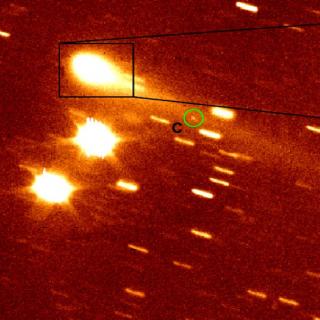Bibcode
Preusker, F.; Scholten, F.; Elgner, S.; Matz, K. -D.; Kameda, S.; Roatsch, T.; Jaumann, R.; Sugita, S.; Honda, R.; Morota, T.; Tatsumi, E.; Cho, Y.; Yoshioka, K.; Sawada, H.; Yokota, Y.; Sakatani, N.; Hayakawa, M.; Matsuoka, M.; Yamada, M.; Kouyama, T.; Suzuki, H.; Honda, C.; Ogawa, K.
Bibliographical reference
Astronomy and Astrophysics
Advertised on:
12
2019
Journal
Citations
10
Refereed citations
10
Description
A high-resolution 3D surface model, map-projected to a digital terrain model (DTM), and precisely ortho-rectified context images (orthoimages) of MASCOT landing site area are important data sets for the scientific analysis of relevant data that have been acquired with MASCOT's image camera system MASCam and other instruments (e.g., the radiometer MARA and the magnetometer MASMag). We performed a stereo-photogrammetric (SPG) analysis of 1050 images acquired from the Hayabusa2 Optical Navigation Camera system (ONC) during the asteroid characterization phase and the MASCOT release phase in early October 2018 to construct a photogrammetric control point network of asteroid (162173) Ryugu. We validated existing rotational parameters for Ryugu and improved the camera orientation (position and pointing) of the ONC images to decimeter accuracy using SPG bundle block adjustment. We produced a high-resolution DTM of the entire MASCOT landing site area. Finally, based on this DTM, a set of orthoimages from the highest-resolution ONC images around MASCOT's final rest position complements the results of this analysis.
Related projects

Small Bodies of the Solar System
This project studies the physical and compositional properties of the so-called minor bodies of the Solar System, that includes asteroids, icy objects, and comets. Of special interest are the trans-neptunian objects (TNOs), including those considered the most distant objects detected so far (Extreme-TNOs or ETNOs); the comets and the comet-asteroid
Julia de
León Cruz